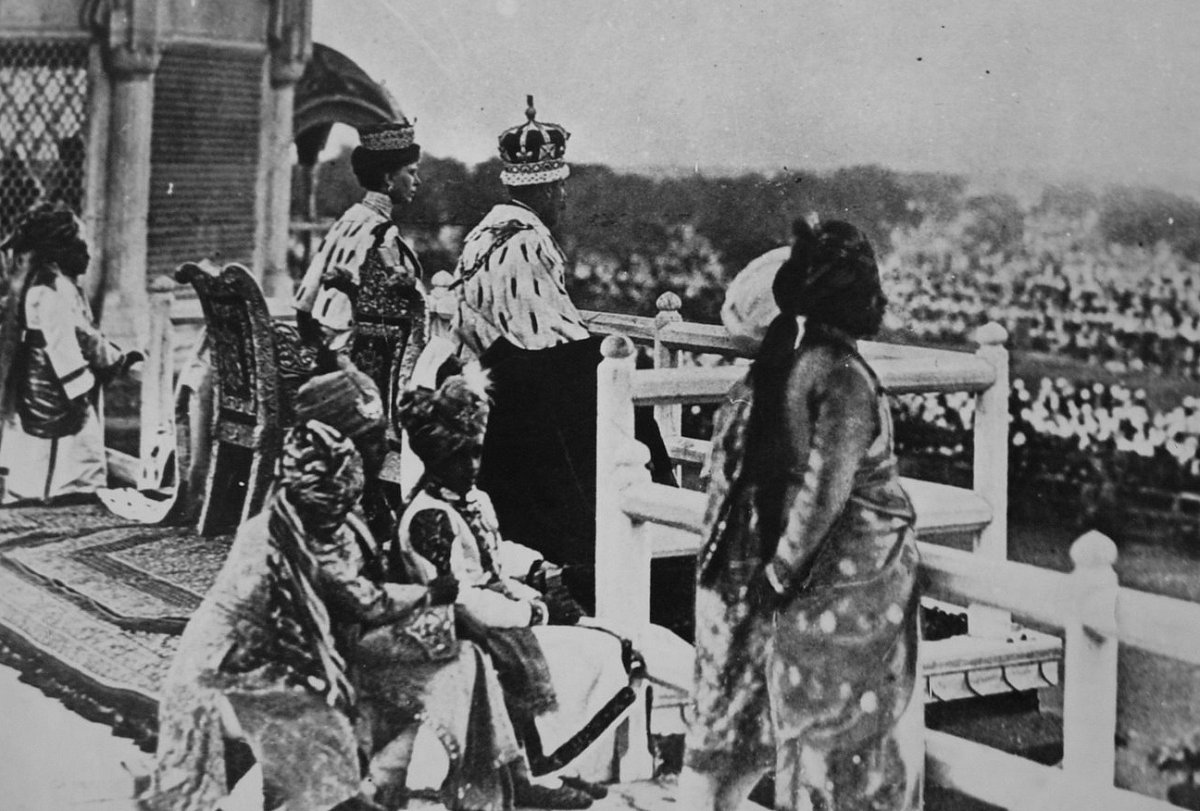
On this day 110 years ago, King George V and Queen Mary of the United Kingdom made one of the most fascinating appearances of their reign, attending the Delhi Dubar celebrating their coronation in India. Today, we’ve got a closer look at the jewels that Queen Mary commissioned to wear at the ceremony.
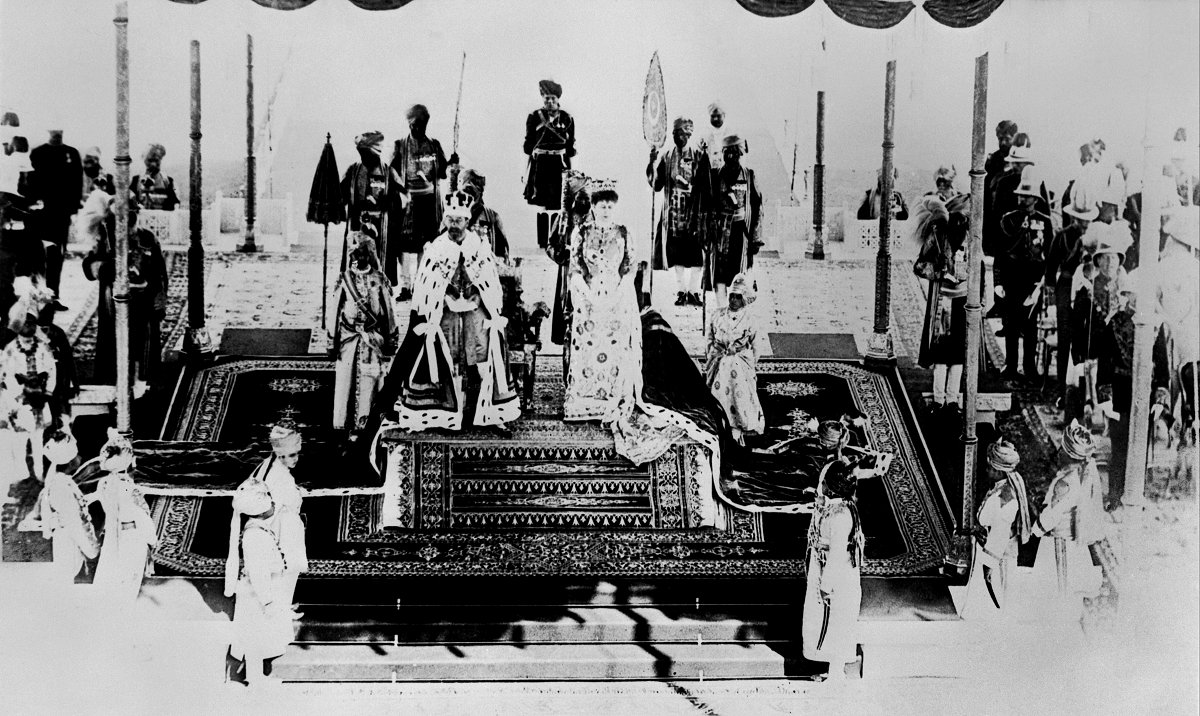
The mass assembly was coordinated by the British who were ruling over the Indian people during the imperial period. The ceremony marked the transfer of power at the start of a new reign, emphasizing that the British rulers were also Empress and Emperor of India. The 1911 celebration was the third Delhi Durbar, and it would end up being the last. This display of colonial power would ultimately be the only durbar in India attended by a reigning British monarch. Indian independence was already on the horizon.
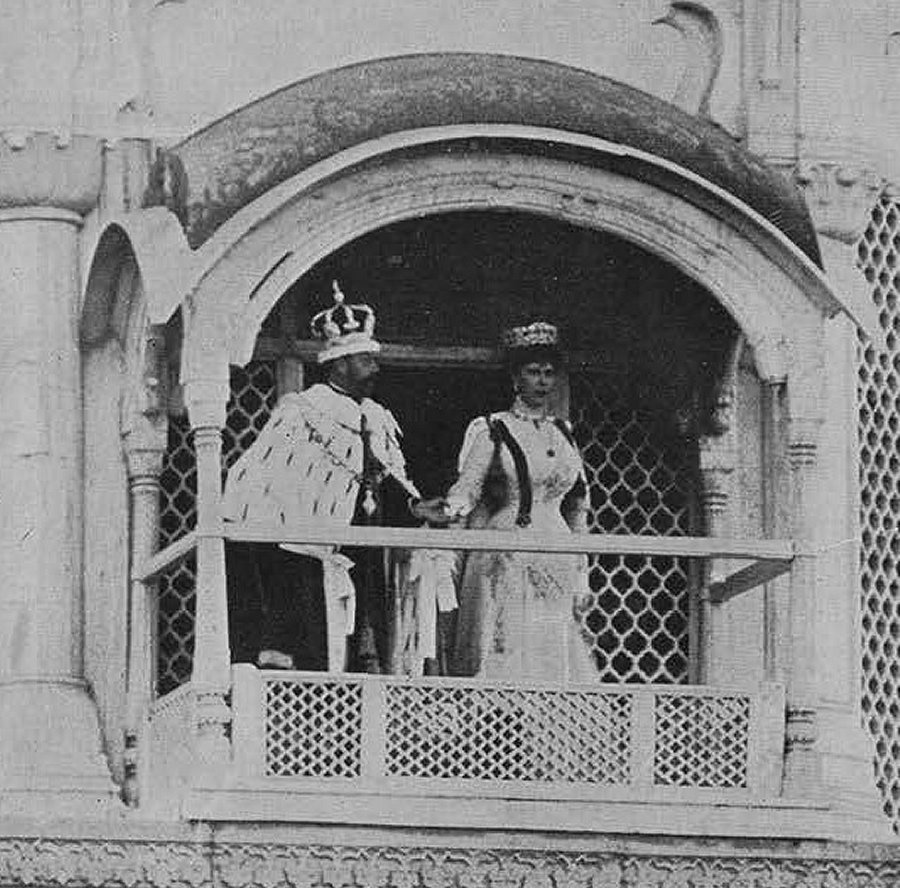
The festivities in 1911 lasted for more than a week. On December 12, 1911, King George and Queen Mary appeared before a crowd of thousands, including Indian princes and nobles, at Coronation Park in Delhi. The following day, they also made a balcony appearance (pictured above) at the Red Fort, allowing even more of the people to see them in their splendid durbar attire.
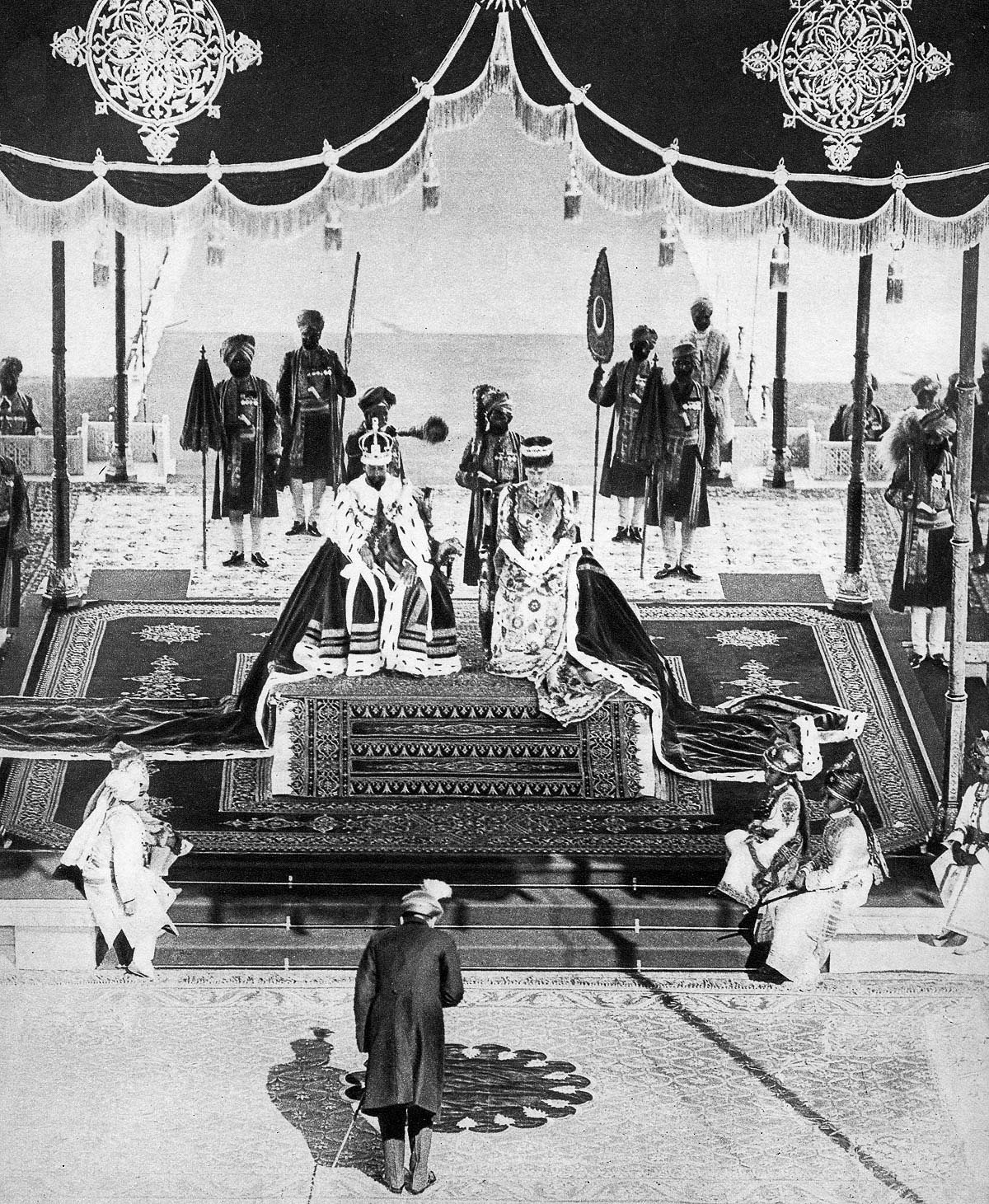
Above, the Nizam of Hyderabad—yes, that Nizam of Hyderabad—makes his homage to the royal couple during the durbar on December 12. Nearly ever prince in India, and one princess, the Begum of Bhopal, appeared in their royal finery to bow before the Emperor and Empress. One prince, though, sparked a whole lot of conversation with his appearance. Maharajah Sayajirao III, the Gaekwar of Baroda, shocked many when he arrived wearing no jewelry.
Instead of bowing three times and withdrawing as expected, the maharajah bowed only once and turned his back on George and Mary as he stepped away. Some even reported that he laughed softly. The entire moment was interpreted as a snub to the British colonial rulers. The incident caused significant friction between the maharajah and the colonial government. Apparently, though, King George didn’t hold it against him. Sayajirao was made a Knight Grand Commander of the Order of the Indian Empire in 1919.
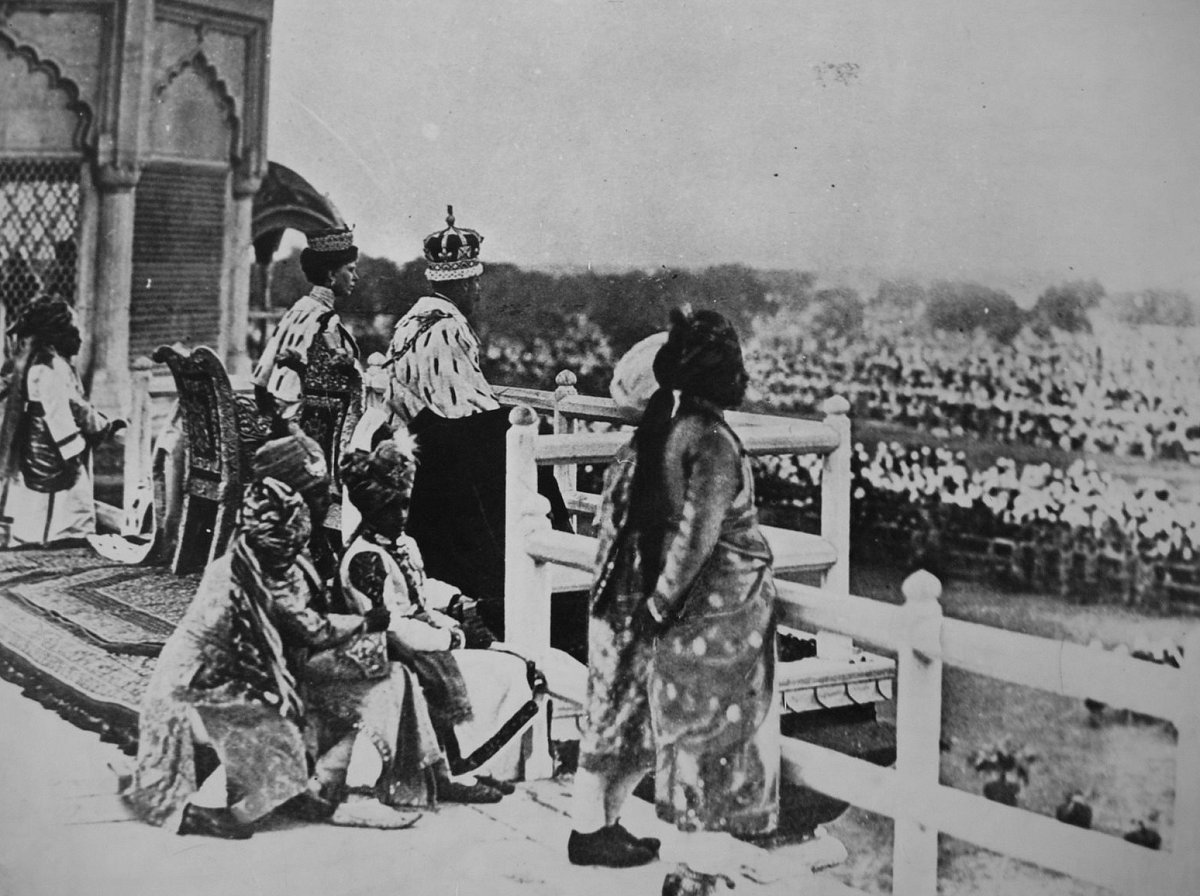
An incredible number of Indian people participated in the durbar celebrations. More than 25,000 of them were awarded silver Delhi Durbar medals to acknowledge their involvement in the proceedings. A few hundred gold Delhi Durbar medals were also handed out, mostly to Indian princes and colonial officials.
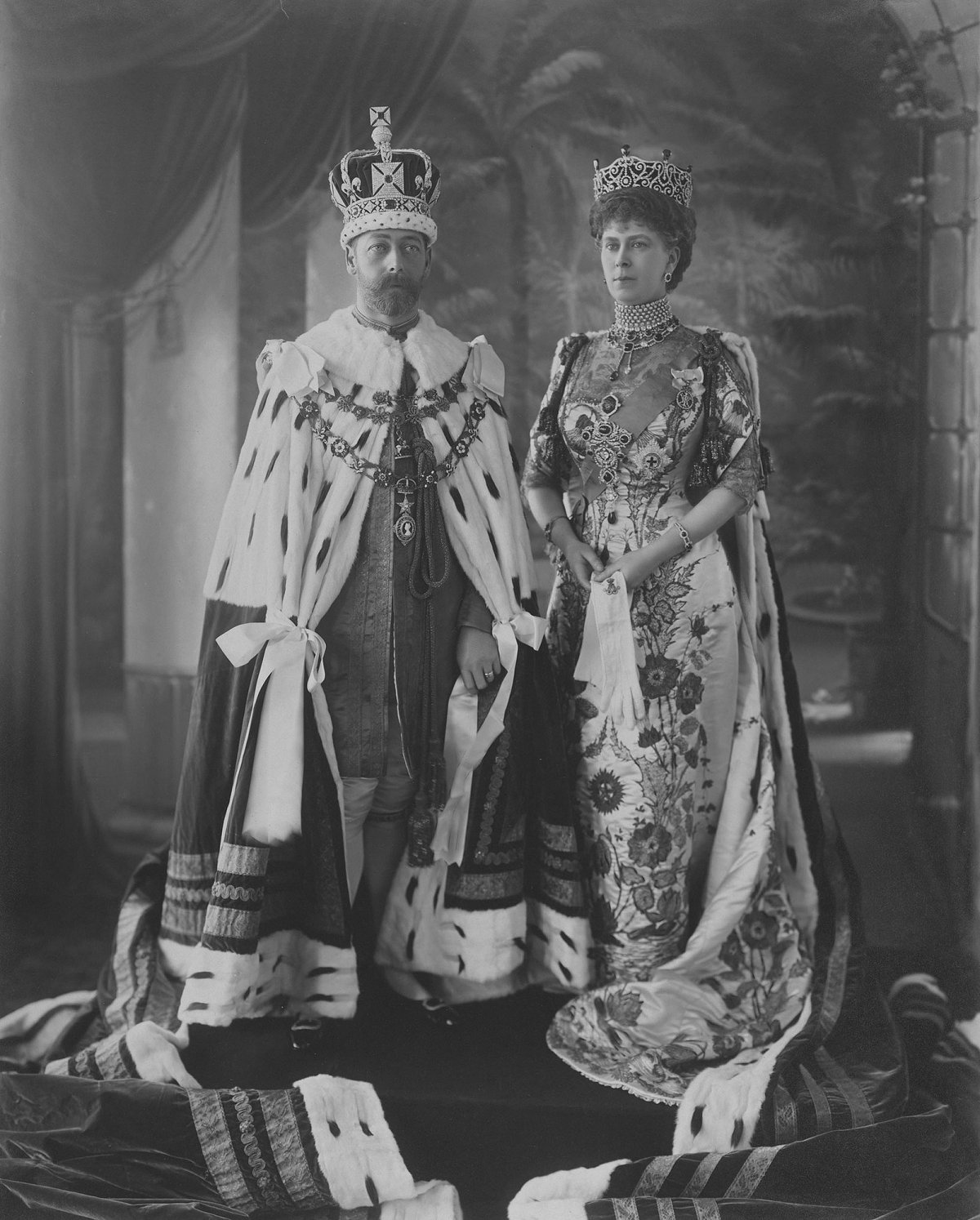
King George and Queen Mary appeared in attire and jewels that were certainly coronation-worthy at the event. He wore the Imperial Crown of India, which was made in 1911 by Garrard specifically for the event. George wasn’t actively crowned during the durbar, but he arrived wearing the crown and kept it on throughout the ceremony. The crown, which is set with diamonds, emeralds, rubies, and sapphires, was never worn again. It’s now on display at the Tower of London with the rest of the crown jewel collection.
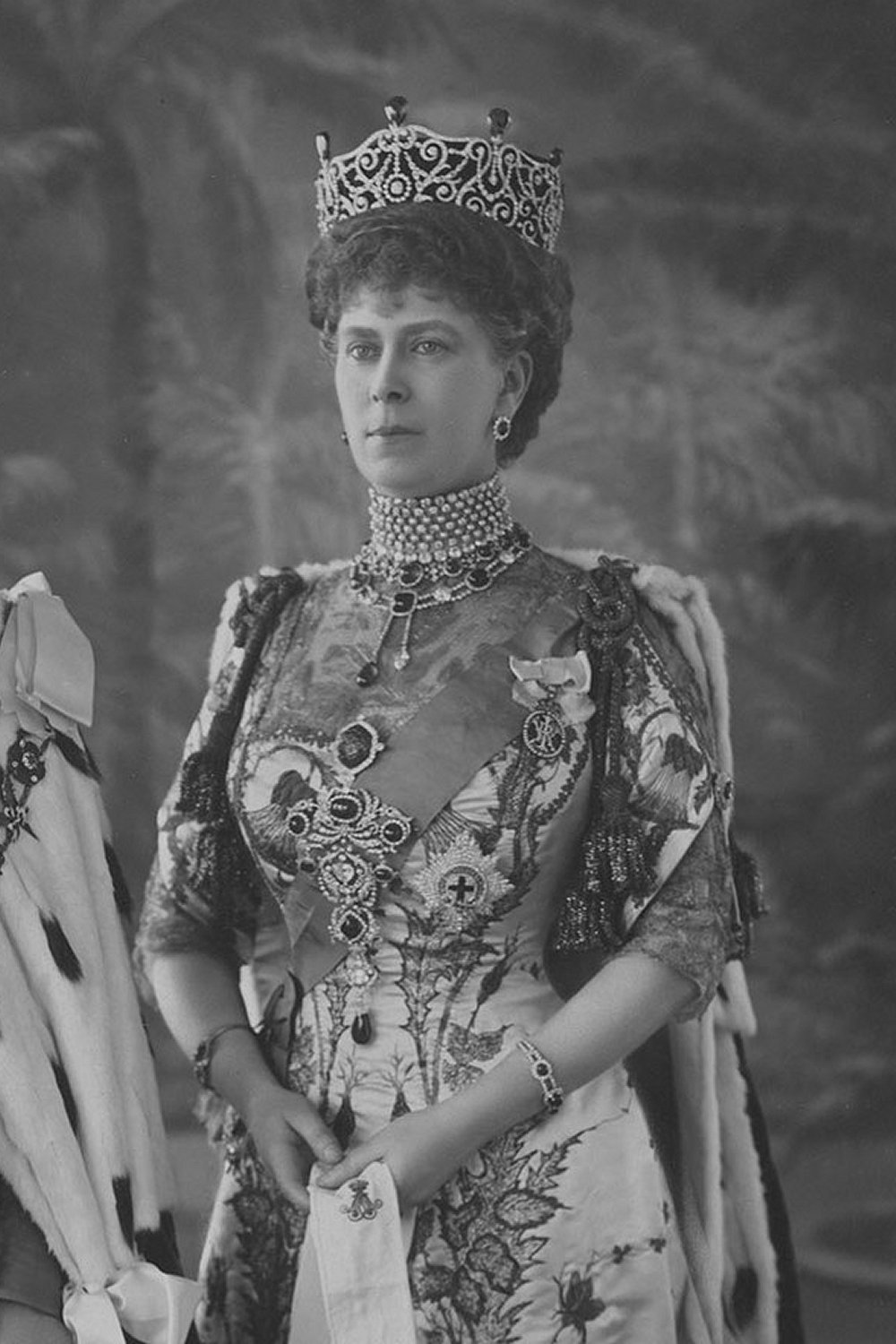
Queen Mary wore a parure of jewels that had also been created for her to wear at this event. The Delhi Durbar Parure, as it is appropriately called, consists of several pieces of jewelry set with diamonds and emeralds. Here, in an official portrait taken for the durbar, Mary wears a rather astonishing amount of jewelry. From head to wrists, let’s quickly catalogue the pieces, shall we?
On top of Mary’s head is the Delhi Durbar Tiara, with its emerald toppers. (These, and most of the other emeralds in the parure, come from the Cambridge emerald collection.) In her ears, she fastened the emerald and diamond cluster earrings from the parure. And then we get to the stack of necklaces. From the chin down, we’ve got a diamond riviere, Mary’s five-row diamond and pearl lattice choker necklace, and another diamond riviere. Next is a necklace of diamonds and emeralds, which was presented to Mary by the Maharani of Patiala during the durbar on behalf of the Ladies of India. (This was later remade as an Art Deco choker necklace.) Next is the Delhi Durbar Necklace, with its distinctive négligée pendants: one Cambridge emerald drop, and one Cullinan diamond drop.
Next is a large brooch set with a carved emerald surrounded by a border of diamonds. This was also a durbar gift, presented to Mary on behalf of the Ladies of India. And then we reach the grand, incredible Delhi Durbar Stomacher, which we’ll examine in more detail below. Finally, Mary wears two bracelets: the Delhi Durbar Bracelet on her left wrist, and another emerald bangle on her right.
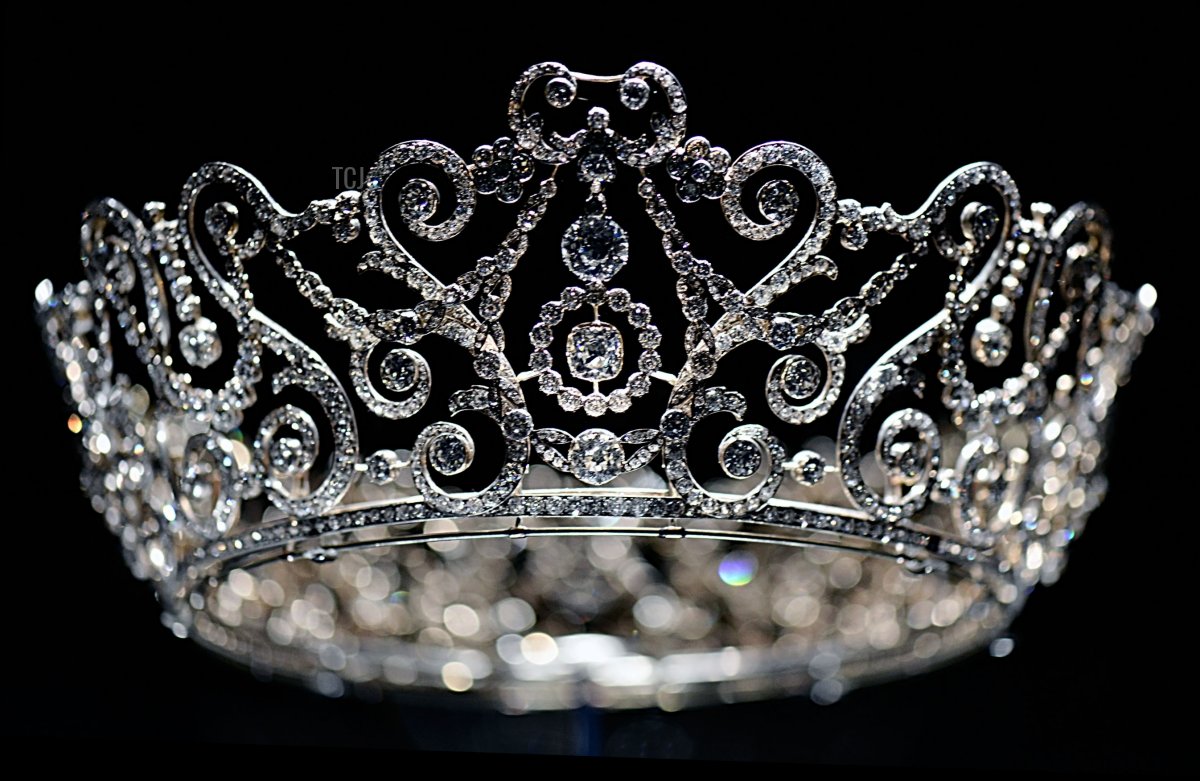
Let’s take a closer look at some of the pieces from the Delhi Durbar Parure. This is the tiara in its current setting. Queen Mary, as usual, liked to tinker with this piece. In 1911, Garrard completed the tiara with its emerald toppers, sourced from the collection of Cambridge emeralds that Mary had recently reclaimed from her late brother’s mistress. The tiara was completed by the jeweler in June 1911. Later, the emeralds were removed from the top of the tiara, so that they could be worn with the Vladimir Tiara (or on a small diamond bandeau). In 1912, the tiara was adjusted so that it could be worn with the Cullinan III and IV diamonds. The piece went through more slight adjustments in the 1940s, when Mary loaned the tiara to her daughter-in-law, Queen Elizabeth.
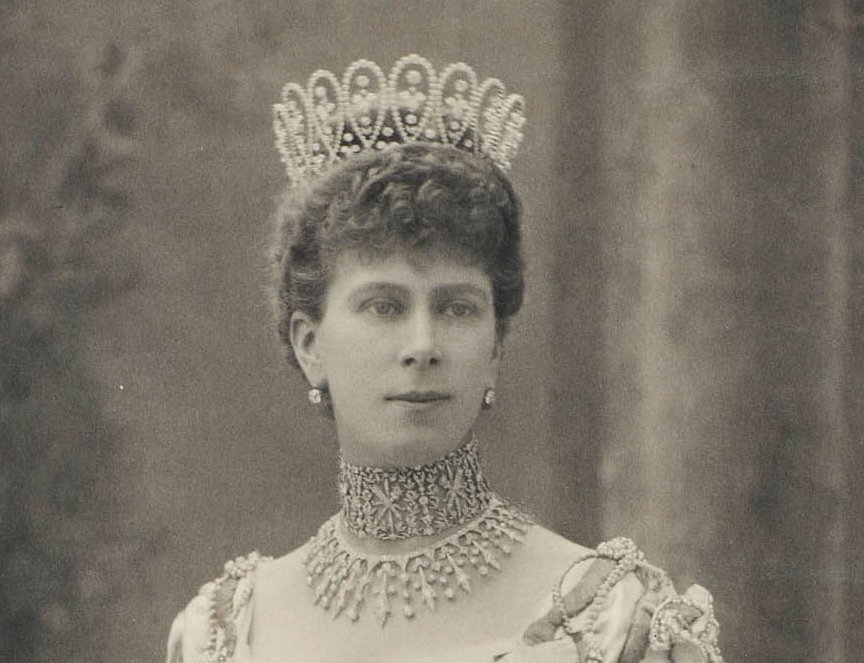
Most of the diamonds used to make the Delhi Durbar Tiara came from another royal jewel: Queen Mary’s Boucheron Loop Tiara. She had commissioned the original tiara from Boucheron in 1902, using 675 diamonds that had been presented to her by the directors of the De Beers Mine in Cape Town, South Africa. She wore the tiara occasionally, including in the 1905 portrait shown above. But it clearly wasn’t a favorite, as she was willing to sacrifice the tiara and start over with the same diamonds. Both King George and Queen Mary were clearly pleased with her decision and with the new design of the Delhi Durbar Tiara. He referred to the Delhi Durbar Tiara simply as “May’s best tiara.” Indeed, King George personally paid the bill for the completion of the suite as a a 44th birthday gift for Queen Mary on May 26, 1911.
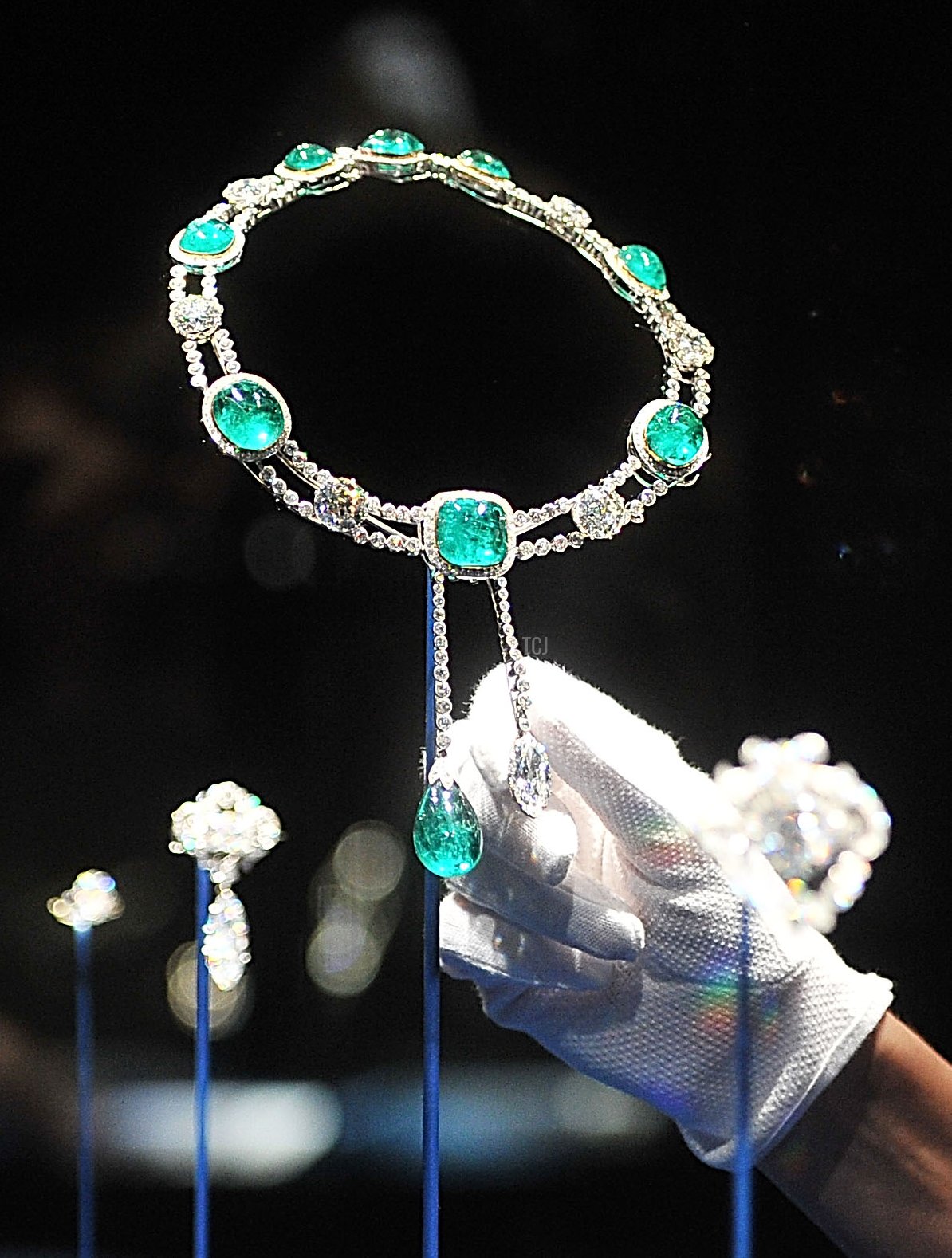
Here’s a closer look at the Delhi Durbar Necklace, one of the parure’s most interesting pieces. The jewel is designed as a modern necklace with alternating diamonds and eight of the Cambridge emeralds, as well as a pair of négligée pendants. In jewelry terms, a “négligée” is an ornament with two pendant sections, one of which is slightly longer, producing an asymmetrical effect. The design was particularly popular during the Edwardian era, and the Durbar necklace was made at the very end of that period. One of the pendants is a cabochon emerald drop from the Cambridge emerald collection; the other is the 8.8-carat Cullinan VII Diamond.
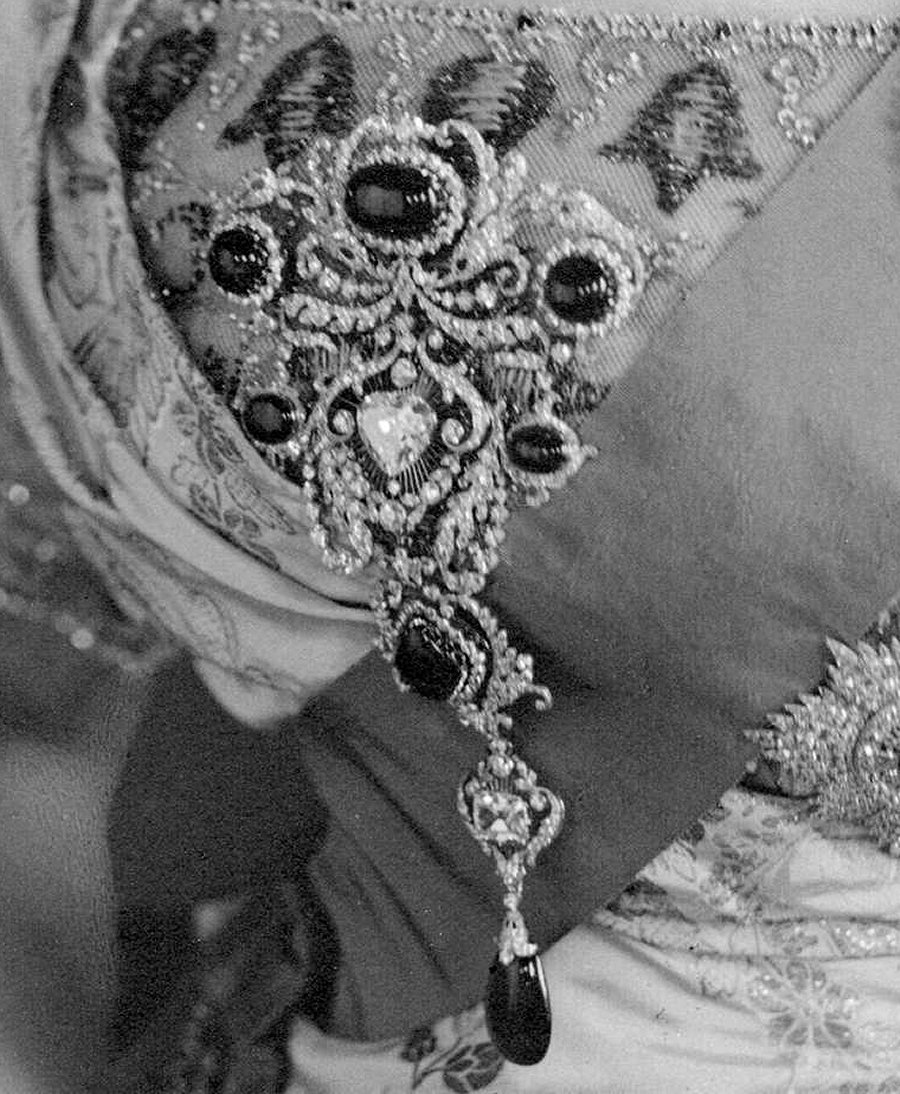
And then there’s the Delhi Durbar Stomacher, the most complicated piece of the entire set. This enormous corsage ornament covered the bodice of Queen Mary’s gown for the durbar. Like the rest of the suite, it’s set with diamonds and emeralds. While Mary wore it in this “complete” form for the durbar, its sections could be taken apart, swapped for other pieces, or even worn individually. For example, I know you’ll spot the heart-shaped Cullinan V Brooch set in the very center of the stomacher. Below that, another diamond and emerald scroll element is attached, which can also be worn separately as the top portion of a diamond and emerald brooch. And below that is the top portion of the Cullinan VI and VIII Brooch, with an emerald drop in the place of its usual Cullinan VI pendant.
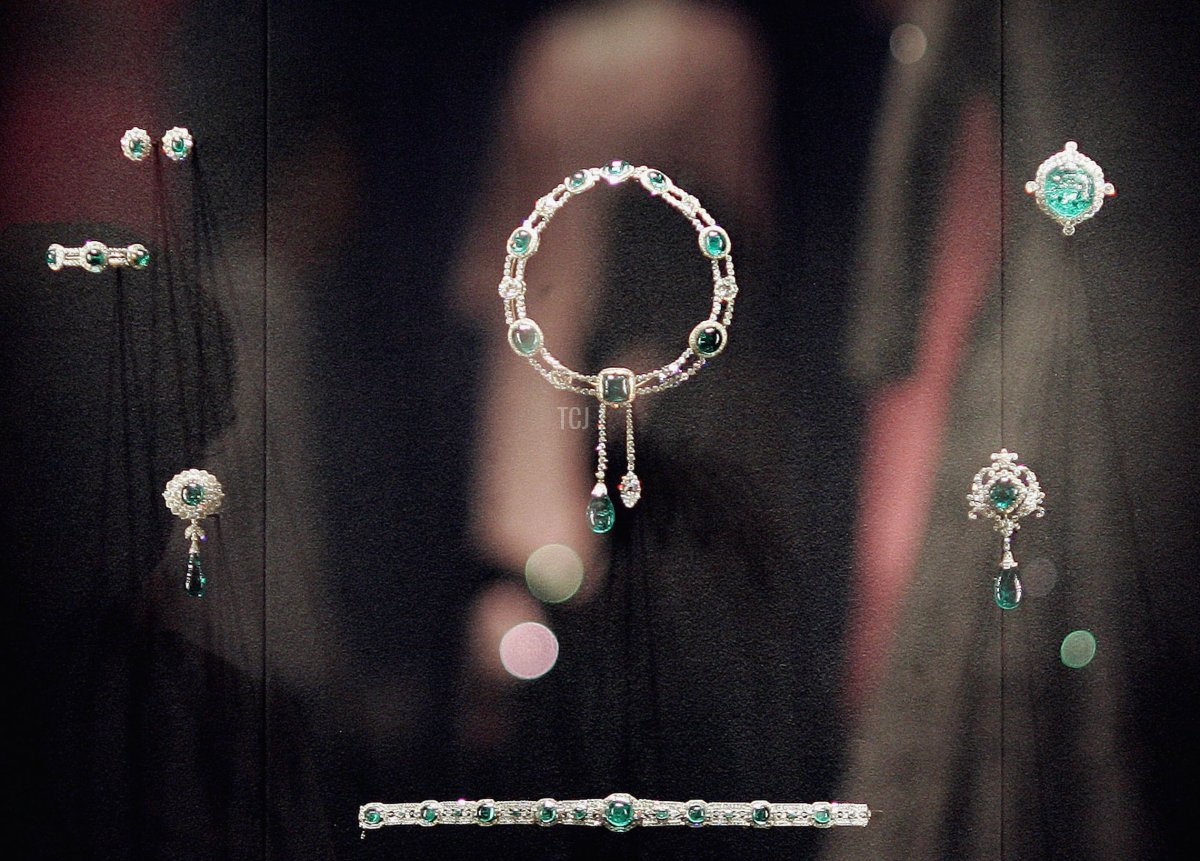
Here’s a look at the parure with nearly all of its pieces. (The tiara isn’t included, and the Cambridge Emerald Cluster Brooch, a nineteenth-century jewel, is added in.) Clockwise from the top left, we’ve got the earrings, the necklace, the carved Ladies of India Brooch, the scroll brooch made from part of the stomacher, the Art Deco Choker Necklace (made from the original Ladies of India Necklace), the Cambridge Emerald Cluster Brooch, and the bracelet.
Although she loaned the Delhi Durbar Tiara to Queen Elizabeth the Queen Mother on a long-term basis, Queen Mary kept the rest of the pieces of the parure in her personal collection. When she died in 1953, virtually all of her jewels were inherited by her granddaughter, Queen Elizabeth II. She now owns the entire parure, including the tiara.

During Queen Elizabeth II’s reign, various members of the family have worn pieces from the Delhi Durbar Parure. The tiara from the suite is on long-term loan to the Duchess of Cornwall, who has worn it in public on precisely one occasion: a banquet during a state visit from the royal family of Norway in October 2005.
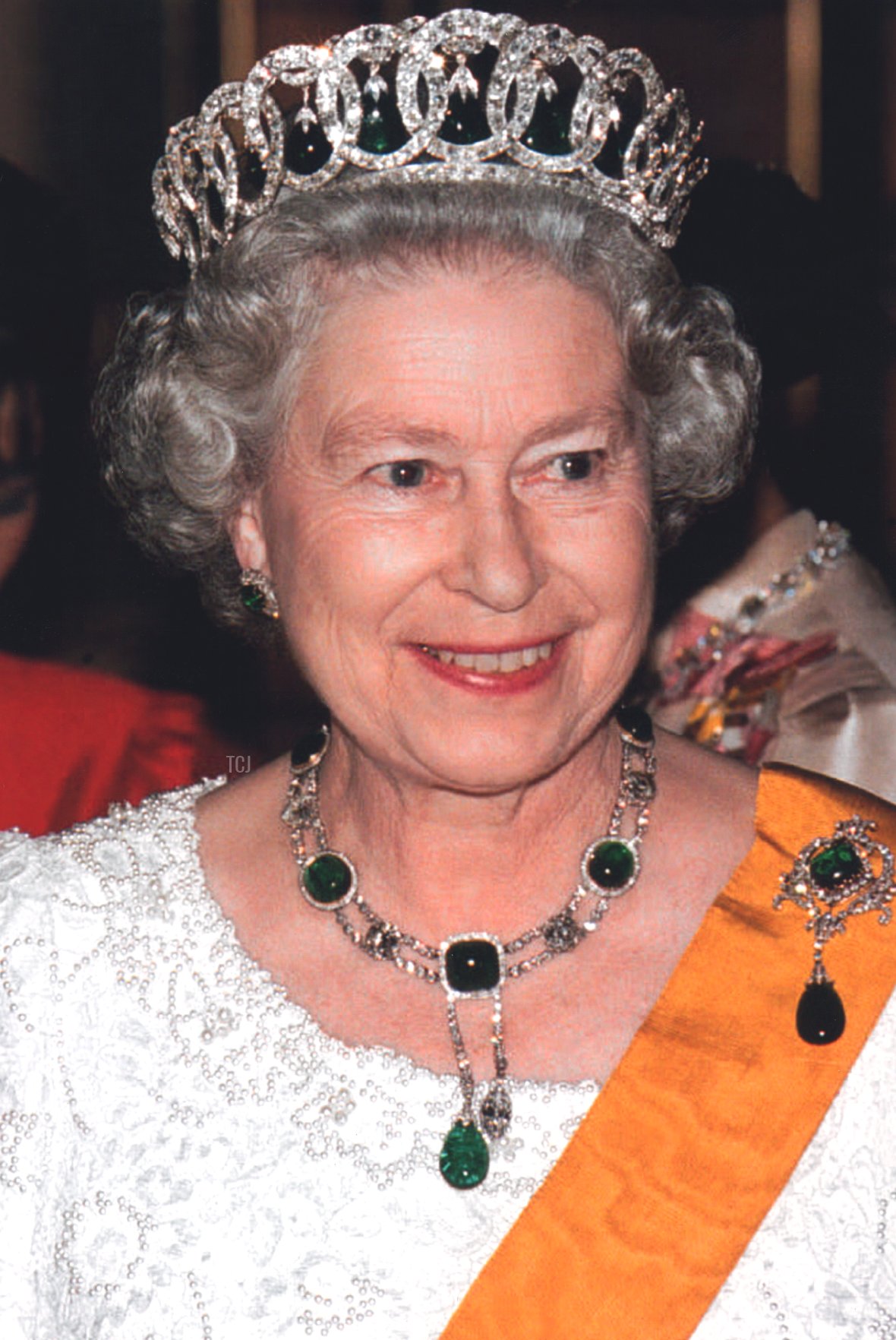
The Queen generally uses the emerald setting of the Vladimir Tiara with other pieces from the Delhi Durbar Parure. Here, during a visit to Thailand in 1996, she wears the Vladimir Tiara with the Delhi Durbar Earrings, the Delhi Durbar Necklace, and the Delhi Durbar Scroll Brooch. She also on occasion wears the Ladies of India Brooch and the Delhi Durbar Bracelet.
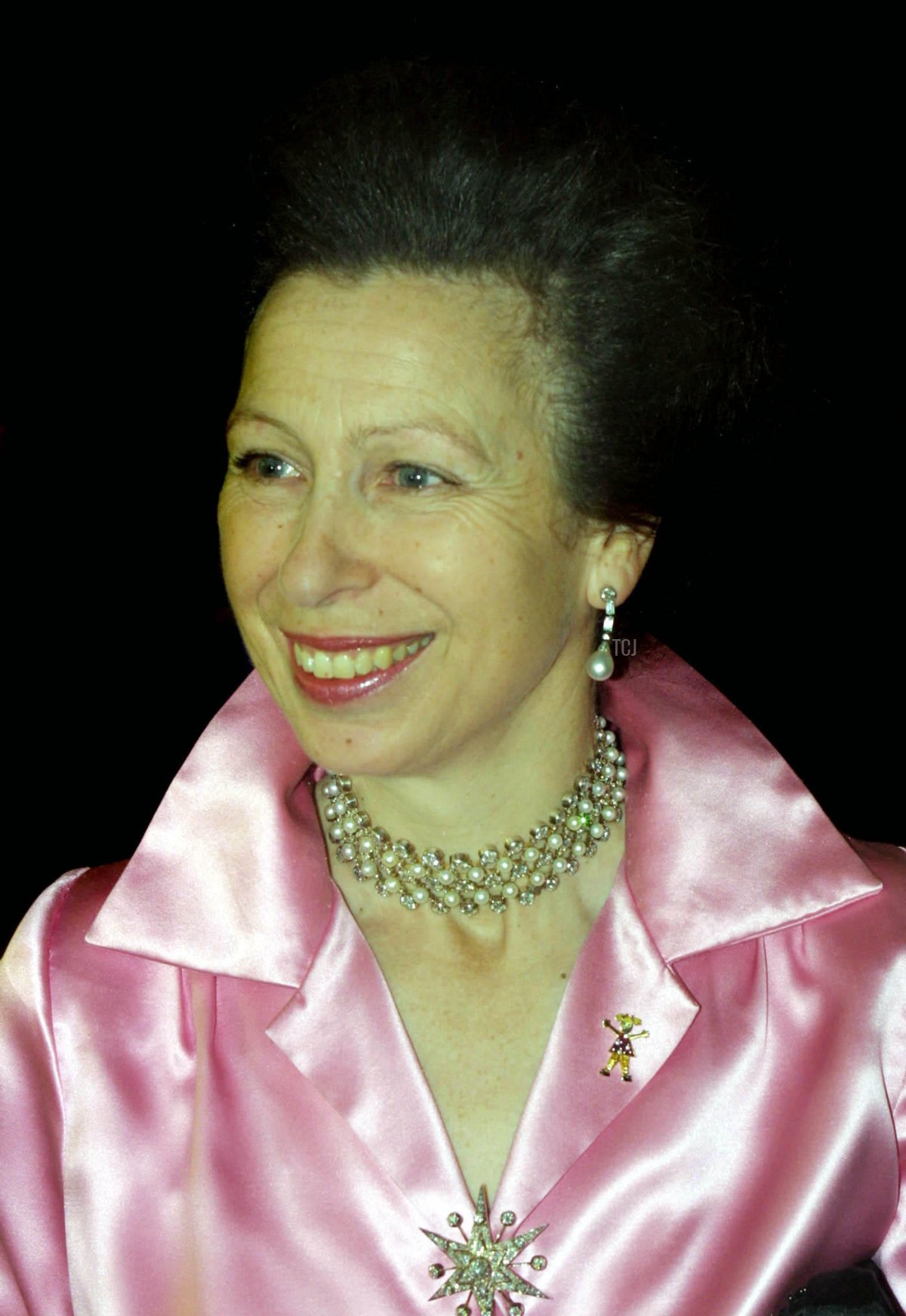
The diamond and pearl lattice choker necklace that Queen Mary wore for the durbar has been seen most recently on the Princess Royal. Above, she wears it for the Festival of Trees gala, a fundraiser for Save the Children, in London in December 2001.
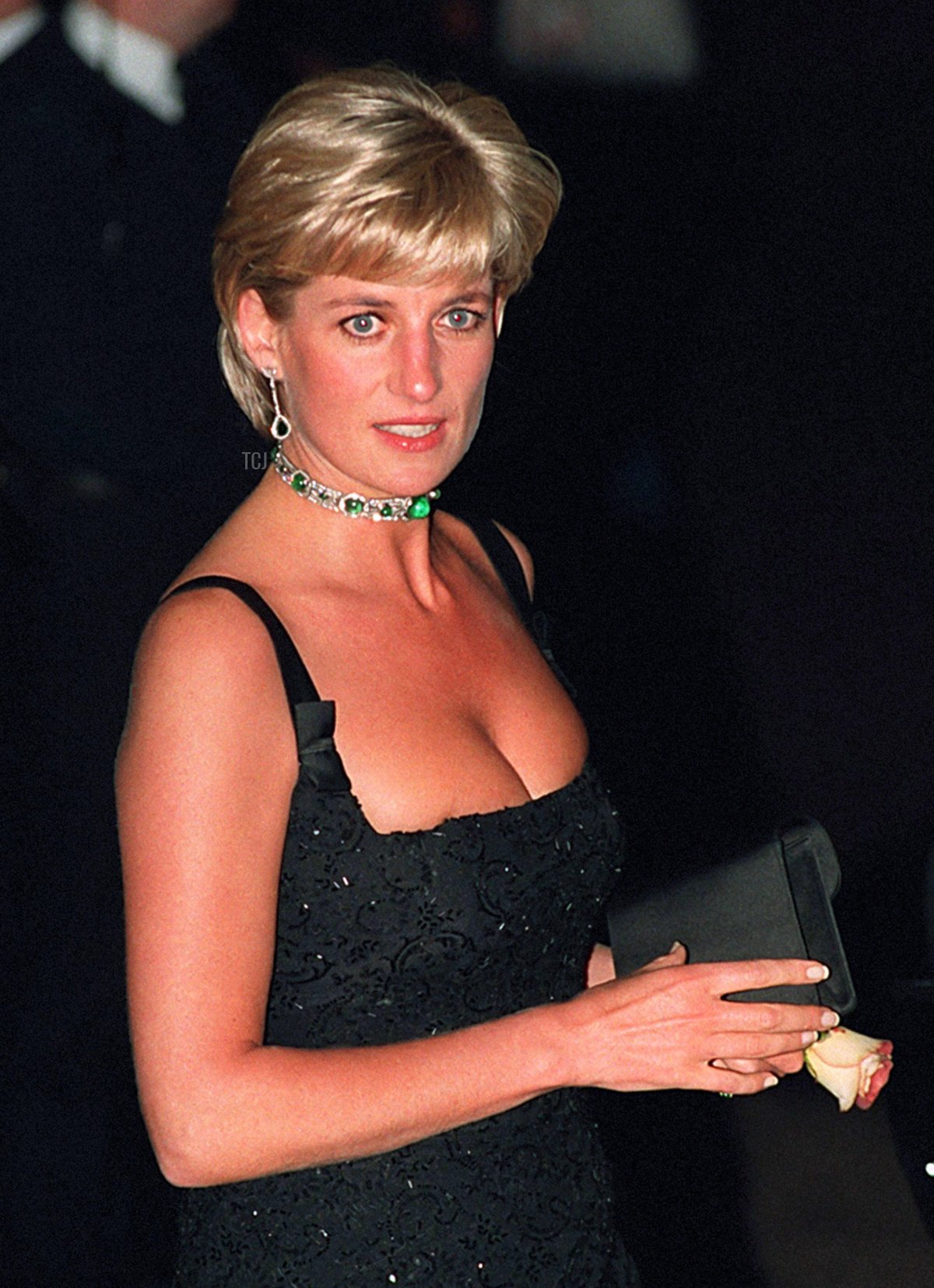
And finally, the most recent person to wear the Art Deco Choker Necklace (made using the Ladies of India Necklace that Mary received and wore during the durbar) from the set in public was Diana, Princess of Wales. She wore the necklace on her last birthday for a gala at the Tate Gallery in London.
Leave a Reply
You must be logged in to post a comment.